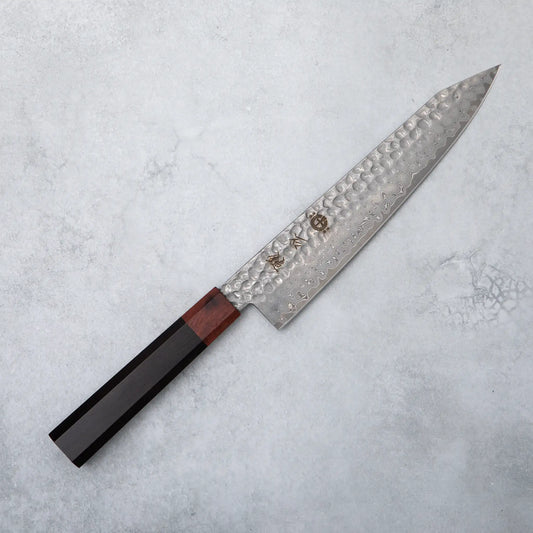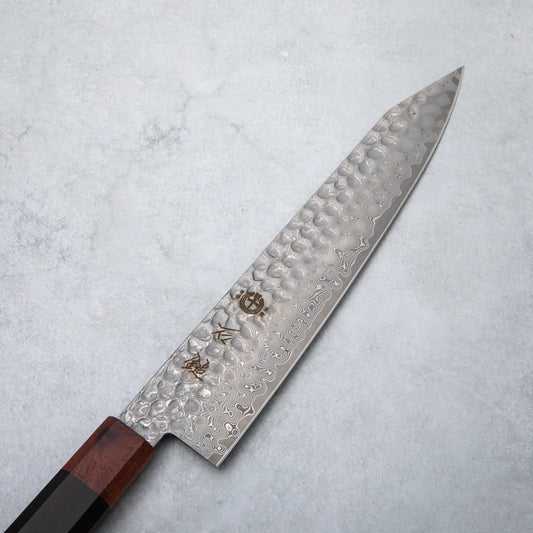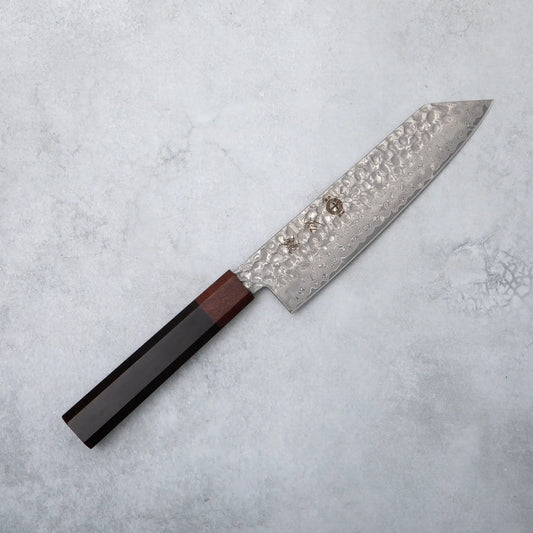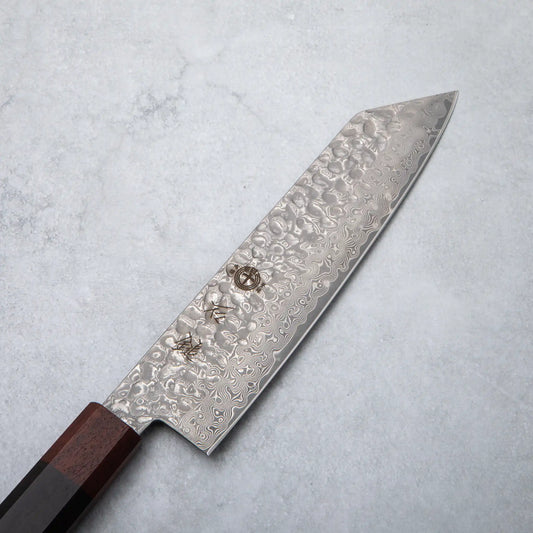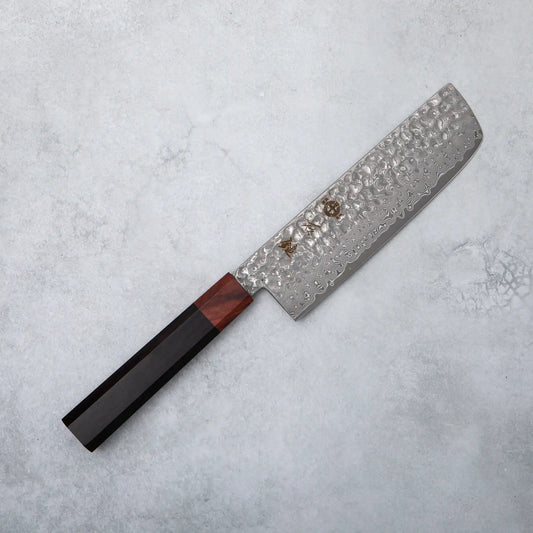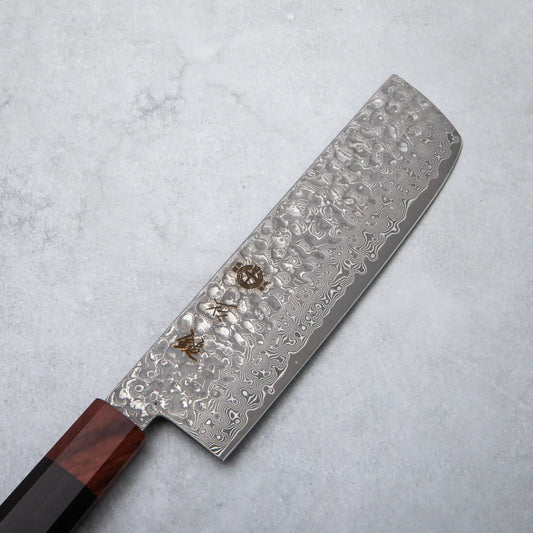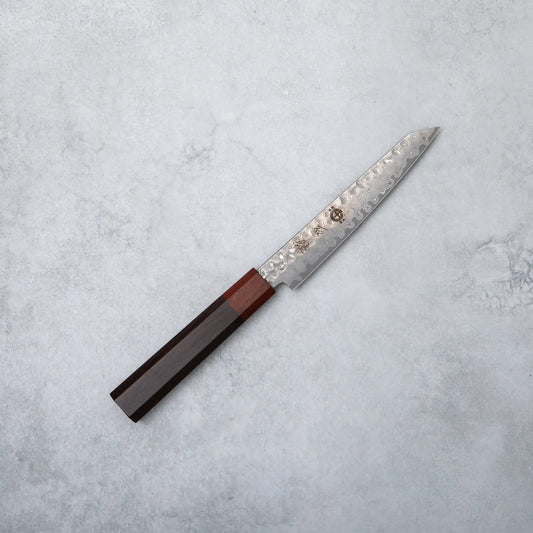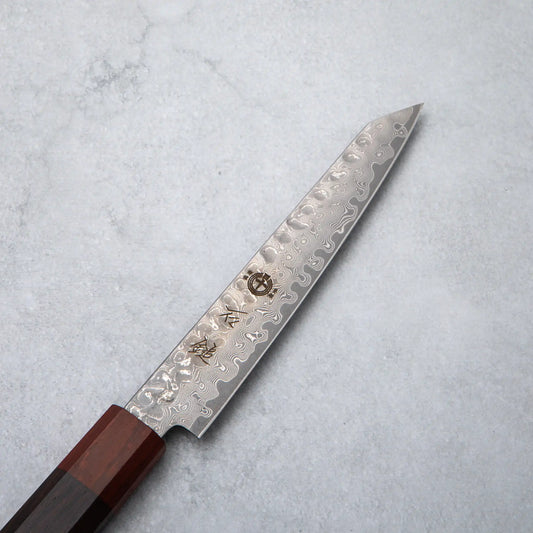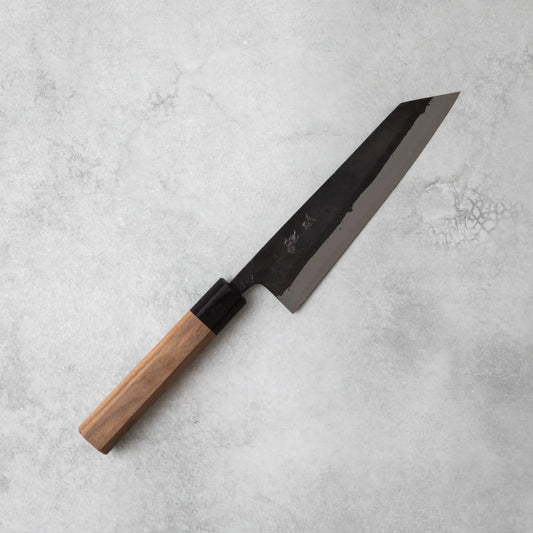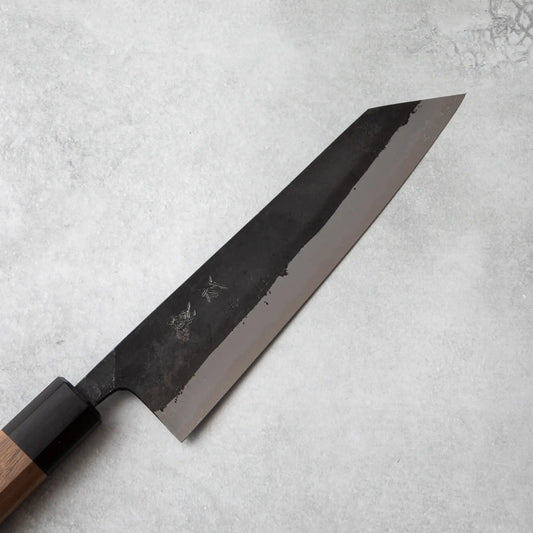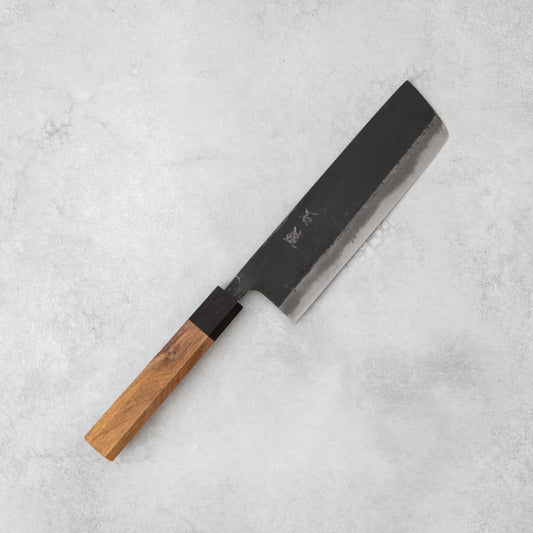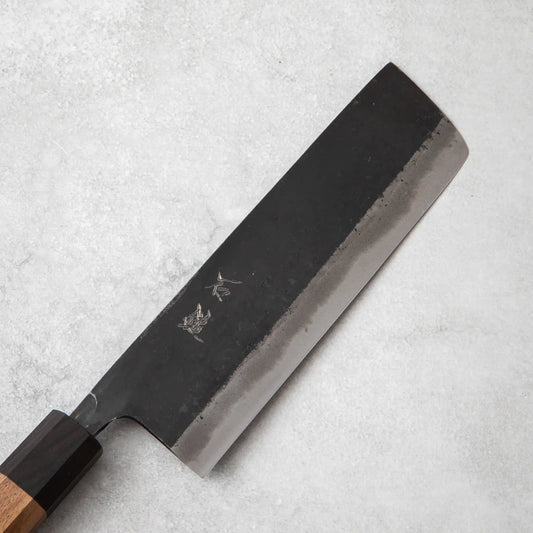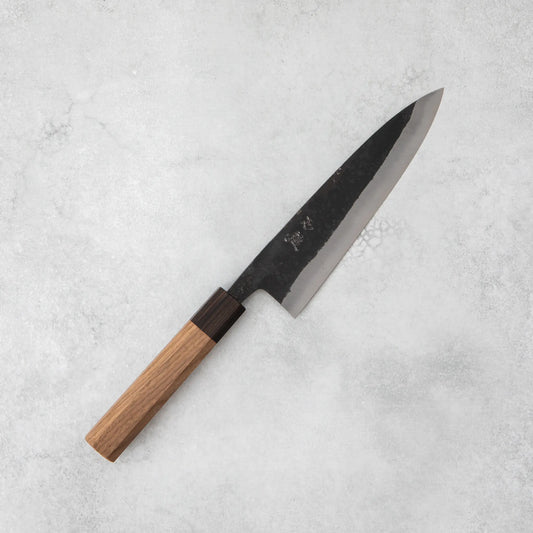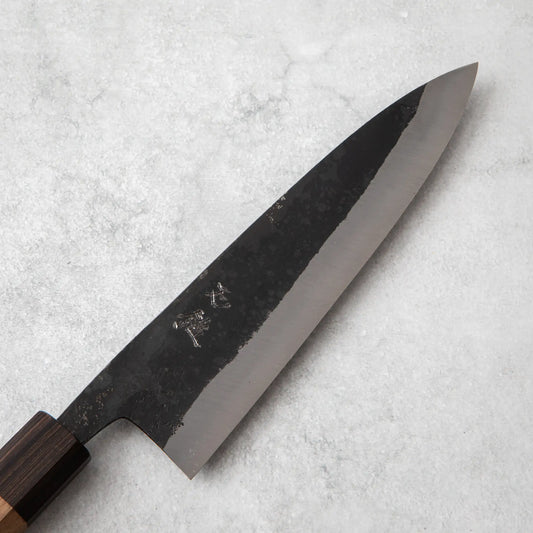Japanese knives are, of course, renowned worldwide for their exceptional sharpness and meticulous craftsmanship, but they are also celebrated for their beauty. Clean, perfect lines, flawless straightness, and precise balance make each knife a functional work of art. But today, we want to share something different, something unconventional, something that might not appear beautiful at first glance. Underestimate it, and you’ll overlook its true value. That there is always something more than meets the eye.
Honoring the Hands Behind Ishizuchi Knives
At Omakase, we are honored to share the timeless artistry of the Ishizuchi Knife Collection, crafted by hands that have devoted generations to perfecting their blades. For over a century, Ishizuchi Knives has been synonymous with exceptional craftsmanship, nestled amidst the majestic mountains of Kochi Prefecture, Japan. Their lineage stretches back even further, drawing upon the rich 400-year legacy of the Tosa Hamono artisans, keepers of an ancient sword-forging tradition passed down for over a thousand years.
The name Ishizuchi itself comes from the awe-inspiring Ishizuchi Mountain, the highest peak in western Japan, whose enduring presence mirrors the unwavering spirit of these craftsmen. From humble tools forged to face nature’s challenges, Ishizuchi evolved to create knives that bring that same spirit into the heart of the kitchen.
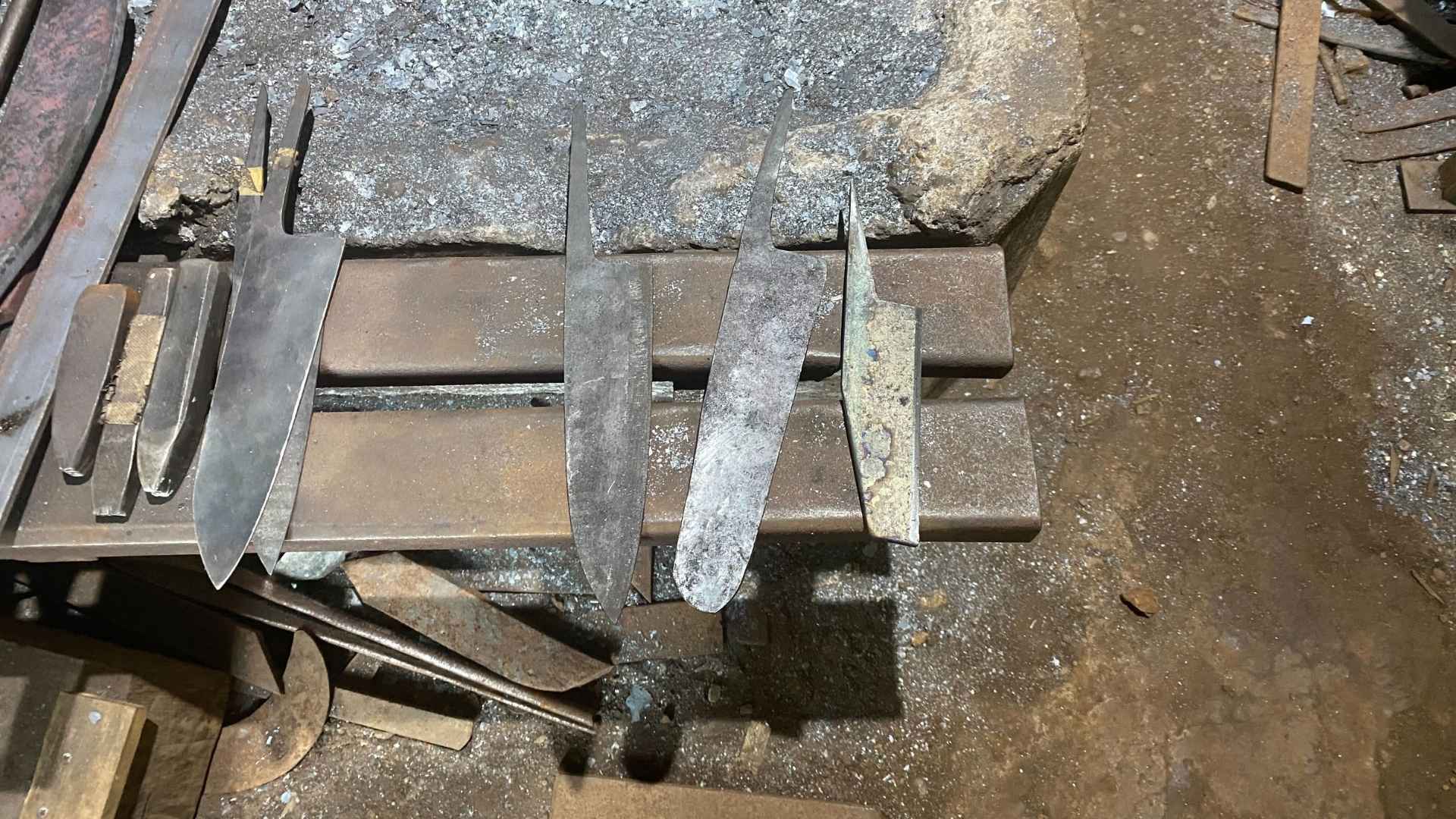
The Soul of Tosa Hamono Blades
For centuries, the forestry industry has thrived in Kochi Prefecture. People forged blades sturdy enough to fell trees in the mountains, using techniques influenced by sword-making methods dating back to the Kamakura period (1185–1333). From this tradition grew the distinctive Tosa Hamono style.
What sets Tosa Hamono knives apart is their “free forging”; each blade is individually forged and shaped by skilled hands to suit its intended purpose. This allows artisans to create an astonishing variety of blades, tailored precisely to the needs of farmers, foresters, and cooks alike: from kitchen knives and general-purpose blades to sickles, nata (Japanese hatchets), axes, and hoes.
Knives crafted in this tradition embody sharpness, resilience, and longevity, qualities born from centuries of dedication and the unwavering spirit of master blacksmiths who turn simple steel into enduring tools of functionality and precision.

Beyond Polished Perfection: The Ishizuchi ZDP189 Knives
At first glance, the Ishizuchi ZDP189 knives may puzzle you. Forged from ultra-premium ZDP-189 steel, one of the hardest, most edge-retentive steels used in knife making, they promise exceptional performance. Yet they arrive not in mirror perfection, but with a raw, honest character. Most noticeably, some knives may show small gaps or visible transitions where the handle meets the blade. For those used to seamless, machine-perfect finishes, it might raise eyebrows: Why would a master allow this?
Because nothing about these knives is accidental.
Each gap, each subtle irregularity, is a quiet rebellion against mass-produced perfection. These handles are attached by hand, not in pursuit of flawlessness, but of fit, function, and feel. They are the result of a craftsman choosing tactile harmony over sterile precision. The steel itself is shaped not just with tools, but with years of accumulated skill, hammered, ground, and honed by someone who values performance over polish.
Where Calloused Hands Leave Their Mark
Every Ishizuchi knife is born through the traditional Tosa free-forging technique, a method that values purpose and feel over perfect symmetry. Unlike factory-made blades that hide their making behind layers of polish, Ishizuchi knives proudly embrace their natural textures. You may notice hammer marks, subtle irregularities, and a rugged finish, but these are not flaws. They are the fingerprints of the craftsman, honest proof of a blade shaped, tested, and refined entirely by hand.
Rooted in a tradition of tools made for farmers and foresters, Ishizuchi knives embody a practical spirit that puts sharpness, strength, and everyday reliability above superficial perfection. Their raw surface is a testament to a straightforward, purpose-driven approach to knife making, where each decision favors function and authenticity over ornament.
No two Ishizuchi knives are exactly the same. Each bears the subtle signature of its blacksmith, a quiet reminder that you are holding not just a cutting tool, but a living piece of tradition. When you pick up an Ishizuchi knife, you hold a piece of history, forged by hand and made to be trusted for generations to come.

Visible Craft: The Story Behind Ishizuchi Handles
Some customers have noticed a small cavity in the handle and have asked about it. We appreciate this curiosity and are glad to share the thoughtful design and deep tradition that give this detail its purpose.
Ishizuchi knife handle, not just those in the ZDP189 Series, but also the SG2 Series, and the Blue Steel No.2 & Blue Steel No.2 Damascus with Magnolia Handle Series, is crafted using a traditional Tosa-style technique. This method layers softwood and hardwood together, which is far more demanding than using a single block of hardwood. It calls for skilled hands, carefully chosen materials, and is a hallmark of higher-grade Japanese knives.
Each tang is carefully inserted into the handle by hand, secured with just enough adhesive to allow for future rehandling if needed, and stabilized with hand-drilled holes, which may remain partly visible. What might appear to be a small gap is, in fact, a sign of true craftsmanship: a mark of intentional, time-honored work, not a flaw. There are no hidden shortcuts here, only techniques refined and passed down through generations.
This traditional construction is meant to last for decades and to be serviceable when the time comes. The visible cavity is simply the natural result of precise, manual assembly, something you won’t find in mass-produced knives, especially those made outside Japan. This thoughtful design ensures your knife can be rehandled and maintained over the years, staying in your kitchen as a trusted tool and piece of tradition, rather than becoming disposable.
Ishizuchi ZDP189 Chef Knife
A reliable companion for any chef in the kitchen. This stunning knife is a perfect addition to any kitchen. Its ergonomic handle offers a comfortable, secure grip for optimal control and maneuverability. Whether slicing, dicing, or chopping, it excels at everything from delicate vegetables to precise meat cutting.
Ishizuchi ZDP189 Santoku Knife
The Santoku knife is a versatile all-rounder, ideal for various kitchen tasks. Its balanced design and ergonomic handle offer comfort and control, making it perfect for daily use. Whether chopping vegetables or slicing meat and fish, it delivers precise, professional-quality cuts with ease.
Ishizuchi ZDP189 Petty Knife
Designed for versatility, this razor-sharp blade glides effortlessly through ingredients, making it perfect for slicing, dicing, mincing, and delicate tasks like julienning vegetables or filleting fish with precision and ease.
The Beauty of Imperfection
The Ishizuchi knives teach us that true beauty isn’t always flawless. Their rough edges, subtle gaps, and hammer marks are not imperfections to be hidden but intentional imprints, the unmistakable signatures of generations of craftsmen. These marks tell a story of hands that have carried tradition forward, forging each blade with purpose, skill, and care.
Rather than concealing their making behind polished surfaces, these knives reveal their heritage openly. The “imperfections” are the living proof of a time-honored process where function and authenticity take precedence over mere appearance. Each uneven curve and visible mark reflects a commitment to practical excellence, resilience, and the enduring spirit of Japanese blade-making.
In choosing an Ishizuchi knife, you hold more than a tool; you hold a piece of history, a legacy shaped by human hands, and a tradition that embraces imperfection as its greatest strength.






